The (Almost) Perfect Level Design of Thief II: The Metal Age
Despite one almost fatal flaw in its final mission, Thief II: The Metal Age contains some of the most purposefully crafted and well-designed levels of any game you could hope to play.
This is the 2000 sequel to 1998's
Thief: The Dark Project, which was a stealth-based immersive sim from
Ultima Underworld and System Shock creators Looking Glass Studios.
These are first person games where the objective verb is to
infiltrate, and the best approach is usually to avoid combat while
focusing on lockpicking and looting.
The second game features almost exactly
the same gameplay and player abilities, but sees the lead character
Garrett more focused on breaking into mansions, banks and other
well-guarded locations around the series' steampunk The City, as
opposed to delving into tombs and fighting off monsters. The horror
atmosphere of the original is largely absent though not entirely, but
as far as creating a simulation of being a thief with the tools to
rob from the rich and pay the rent, the design of the environments
and objectives is nearly spotless.
In contrast to the first game, where
the story came first and levels were created to support it, for Thief
II the team designed a series of levels and wrote the story around
them. This is a design-first game, which likely contributes to its
stately pacing and structure.
Unlike some other immersive sims where
players can generally eschew stealth in favour of a violent approach,
direct confrontation and combat is very challenging. Garrett is
pretty fragile, and sword blows from the startled guards will knock
his health down at an alarming rate. As far as being an immersive sim
goes, this is more about different approaches you can take with the
qualifier they have to be stealthy, and about a simulation and
engaging realisation of the game world you inhabit. The levels are
built in such a way as to encourage expression via different routes
and optional areas and objectives, so that players can still find
their own “path of least resistance” within the more prescriptive
abilities open to Garrett.
The key mechanic of these games is the
light gem at the bottom of the screen that dims or brightens
depending how much light you are stood in and how fast you are moving
– as you play you become accustomed to paying attention to this
constantly as it will inform how well guards can see you. Combined
with this is an NPC scheduling system that, well before The Elder
Scrolls IV: Oblivion, would have guards and other characters moving
around levels of their own accord on patrols of varying routes and
complexity. Being aware of where you are, where NPCs are, and where
you have observed they are likely to be, is key to playing the game.
You also make different levels of noise
depending on what you are walking across. The game employs genuine 3D
sound, simulating the way real noises bounce off surfaces in its game
world. Eric Brosius and the sound team worked with the Dark Engine to
give different areas or “room brushes”, different acoustic
properties. My source for this is the fandom
wiki, where you can also look at some of the various audio
environments. The result is that when playing the game, you could
close your eyes and know what surface you are walking on.
Do note that although I am mostly not
discussing the story, there will be complete spoilers for how the
missions themselves play out – and those levels are arguably the
most joyful discoveries you will have playing this game, so fair
warning if you haven't tried this 20-year old classic yet.
Abilities that change how you move
through levels
Garrett does have access to a range of
tools and equipment. This includes mines to use as traps, either
lethally or not, flares to light up darker areas (this is an
extremely gloomy game at times), and most significantly arrows with
elemental properties. These can be used to create new paths – there
is a water arrow that can be used to douse torches, creating new
patches of shadow for Garrett to skulk through, and rope and vine
arrows that, once embedded in a surface, will unspool a length of
rope or vine to climb up and gain higher ground. This is provided at
the beginning of each mission, and you can add to it with the loot
you picked up in the last level.
The kicker is, you only have one chance
to use your gear – encouraging the player to experiment and try
different ways of overcoming or circumventing the guard arrangements
and security systems.
The levels, which are designed in such
a way as to allow replays to have an altered journey through them,
may encourage a player to prioritise a certain gear purchase when
they play again, or if they save themselves into an impossible
situation and have to restart anyway. Some might have a lot of loud
floors so you would want to take more moss arrows to soften your
footsteps on those surfaces, others are particularly well lit so you
need more water arrows to extinguish the torches, and so on. Perhaps
a well-placed rope arrow would create a path that circumvents an
encounter you had trouble with.
What this means is that you are getting
more out of the game if you do play again, having a different
experience, and knowledge of the layouts is meaningful and rewarded.
Also, if you do find a level too hard restarting might allow you to
swing the odds in your favour with your gear choices.
Thief II's levels – spaces that
feel real
The levels in Thief 2 resemble real
places rather than corridors or video game environments. Viewed from
above, these resemble the charming little maps Garrett often takes
with him, which in the fiction he has either purloined from an
insider or sketched based on what he knows of the place he's about to
hit. The map is a very clever inclusion especially when combined with
the compass you have, which is an item on your hotbar that swings as
you turn. So the levels are built to support true-to-life compass
navigation via a drawn map you can pull up. Not to mention - and why don't games do this more often - you can annotate your map! Being able to personalise this resource can be huge, particularly in later levels which can be both enormous and labyrinthine.
There is a lot of environmental
storytelling on offer with readables, signs, notes, books and more
that provide narrative and detail on the people who live and work in
these spaces – thorough players can begin finding out about key
characters and factions almost before they are properly introduced. A
perfect example is the early “Shipping... and Receiving”, where
each warehouse you open doesn't just reward you with the loot the
person had stored there, but information about who they are and what
they're up to.
You'll have a variety of methods of
ingress, including crawlspaces, rooftops, back doors and more. Some
areas have very open spaces while others are enclosed, making it more
difficult to avoid notice and reducing the visibility advantages you
often have over the guards. The guards themselves – and the robots
and monsters that are introduced with surprising narrative deftness –
may be stationary or patrolling. The levels are also designed to
enable you to ghost them if you want to, with each guard patrol or
security system offering at least one exploit for the player. On
harder difficulties you will often be failed for knocking out guards
even non-lethally. Streets, corridors and rooms are designed to
enable guards a pretty good view of most of it, most of the time, so
that with timing and by taking advantage of patches of shadow Garrett
can effectively sneak past.
All of these elements of design and
gameplay are brought to bear in a series of 15 missions that, for the
most part, make exceptionally good use of each to guide the player
through an escalating series of challenges and rewarding experiences.
One of the best first-fifths in
gaming
The opening three
levels ingeniously introduce gameplay and up the challenge in stages.
Unlike the first game Thief II doesn't feature a training level, but
the opening mission does an excellent job of tutorialising the
gameplay. While still shaped like a real place, 'Running
Interference' gently pushes players through the Rumsford Manor in
almost a straight line. Unusually, Garrett starts off with a key –
which opens one door on the other side of the manor from his target,
his friend's captured fiance who he must rescue. This linear
infiltration introduces each mechanic in turn, with a few different
arrangements of guards near generous pools of shadow so the player
can get accustomed to alertness levels and taking advantage of hiding
places in a low risk way. On normal difficulty, exploration of the
second floor of the mansion is completely optional – deftly
introducing the idea that pushing around the edges of levels will be
greatly rewarded.
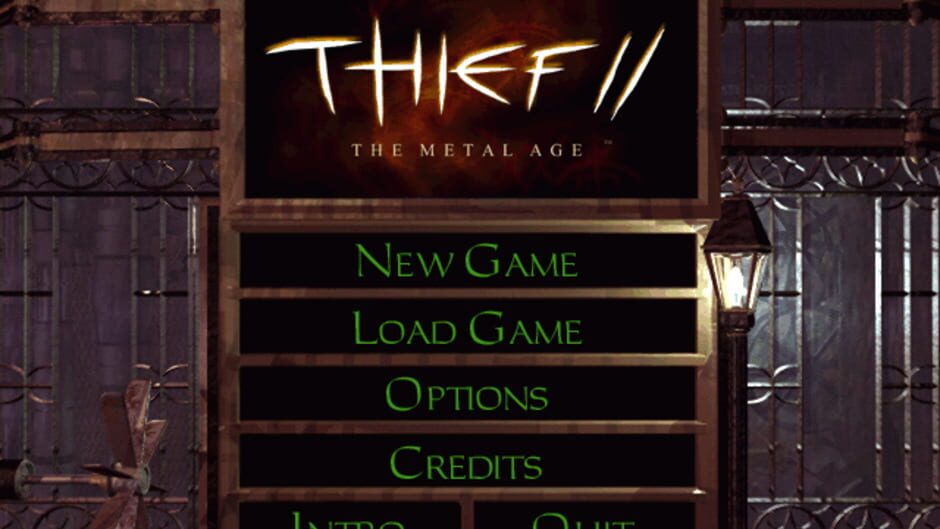 'Shipping... and
Receiving' opens up, giving you a large open area to explore. With a
cleverly simple hook – Garrett needs to steal enough money to be
able to pay the rent – you are dropped into a warehouse district
and can make your own path around the area to complete this
objective. You can explore however you want, with a number of points
of ingress to the warehouses that will eventually bring you to a
central control room from which to open the lockboxes. Readables
found throughout the level and a hint you can buy beforehand will
clue you in to where the best loot is found, and you basically choose
who you want to rob and then go. Or, rob everyone and have more money
for gear in the next level.
'Shipping... and
Receiving' opens up, giving you a large open area to explore. With a
cleverly simple hook – Garrett needs to steal enough money to be
able to pay the rent – you are dropped into a warehouse district
and can make your own path around the area to complete this
objective. You can explore however you want, with a number of points
of ingress to the warehouses that will eventually bring you to a
central control room from which to open the lockboxes. Readables
found throughout the level and a hint you can buy beforehand will
clue you in to where the best loot is found, and you basically choose
who you want to rob and then go. Or, rob everyone and have more money
for gear in the next level.
It provides a
feeling of freedom and possibility that, this early in the game, is
formative. The level is well placed (in contrast to the first game's
second mission 'Break from Cragscleft Prison' which is quite linear
and hostile). It showed me that I could expect locations to offer a
number of ways for me to get into them and back out again, and that
beyond the completion of my objectives, how much longer I spent in a
level would be largely up to me.
The third level,
'Framed' (full writeup here), is where Thief II begins to play some of its best cards.
You are infiltrating a police station, and compared to the warehouse
district the player is now closed in by a tighter and more
restrictive environment which necessitates a hall-by-hall and
room-by-room puzzle solving approach. Robotic security systems are
introduced as well.
However the ace up
the sleeves of the designers for this level, Rich Carlson and Rob
Caminos, is that even on the Normal difficulty, you'll fail the
mission if you knock out more than five guards. This partially
enforces a “ghosting” style of play. Part of the thrill of these
games is getting past guards without them ever knowing anything was
wrong, but some players (myself included) might initially be too
nervous to leave the guard wandering around and so knock them out and
hide them in a corner. Having a restriction like this placed on me
not only encouraged me to shake up my playstyle, but felt like the
game was saying to me that I could do this, if I just gave it a try.
As a result I
began moving more quickly and confidently around the level, taking
care to memorise where guards were and prioritising those that were
likely to cause the most trouble if left to wander about. This had a
permanent effect on the way I played the game, and for the remainder
of the 20hr campaign I was much more comfortable efficiently moving
around guards and staying out of their sight rather than feeling the
need to knock them out. The level's objectives had made me develop
the approach I needed to get through the game.
This opening fifth
of the game makes the player feel like a thief by showing them how to
overcome or work around each obstacle with the right plan of action,
and guide the person playing towards a style of play that best fits
the power fantasy of moving through a space completing a task while
hostile forces are completely unaware.
A campaign packed with standout
missions
The game's middle sections feature
several banner examples of Thief II levels that put these abilities
to the test, such as First City Bank and Trust, a large but enclosed
stealth playground with dense options for routes and solutions.
There's Blackmail, which brilliantly changes the objective partway
through with an unexpected twist. 'Ambush' is a large area of The
City, and along with the rooftop-scouring Life of the Party is an
antecedent to the level design of Arkane Studios' excellent
Dishonored games. The latter is particularly notable for how it
constantly makes the player feel like they are taking an unusual
route or sequence-breaking even if they are largely tracing the route
the designers had in mind – the journey feels organic. This is an
example of where environments being designed to resemble places
rather than video game levels contributes to the suspension of
disbelief. This also provides an empowering feeling of navigating
with real-world logic across a topography that isn't built to be
crossed – and that the enemies and other NPCs in the level would be
unable to traverse.
A highlight is Precious Cargo, which is
a mix of haunted house, submarine and secret base, with the ghost of
a long-dead pirate lurking hidden somewhere in the level, tragic
fates to discover in the environment's readables, and a suitably
creepy lighthouse to ascend. There are many different surfaces, from
soft mulch to the metal of the submarine, requiring the player to
constantly assess their surroundings and consider their path, and the
diverse environment offers interiors, wide open spaces, verticality
and even subaquatic exploration of the gigantic wireframe with an ebb
and flow of tension. Fittingly, this is one of the levels in which
Garrett must fill out his map as he goes, adding to the sense of
learning about the area and gradually having the knowledge to quickly
move about and get things done. Murky waters and atmospherically
limited draw distances plus the soupy overcast colour palette add to
the creepy vibe and the sense that Garrett and the player are far
from their established environment of mansions and back alleys.
Everyone talks about Life of the Party, but this was my favourite
mission.
Educating the player with levels
that have a lesson to impart
The game seems invested in teaching the
player. Even past the opening three missions and their immaculate
tutorialisation of the gameplay, Thief II has a smattering of
missions that demonstrate specific ways to playing that will later
pay off in high-stakes situations and enemy-dense areas. Trace the
Courier has you re-traverse exactly the same environment as in
Ambush!, but you are shadowing a courier and so have to get through
the area very quickly and without getting into fights or slowing down
too much. You have to learn how to quickly and stealthily navigate
areas you might otherwise have taken your sweet time in. Trail of
Blood has you follow yes, a trail of blood, so that you always have
to be taking notice of the environment while quickly moving through
it – I got turned around at least once trying to be clever and
sequence-break.
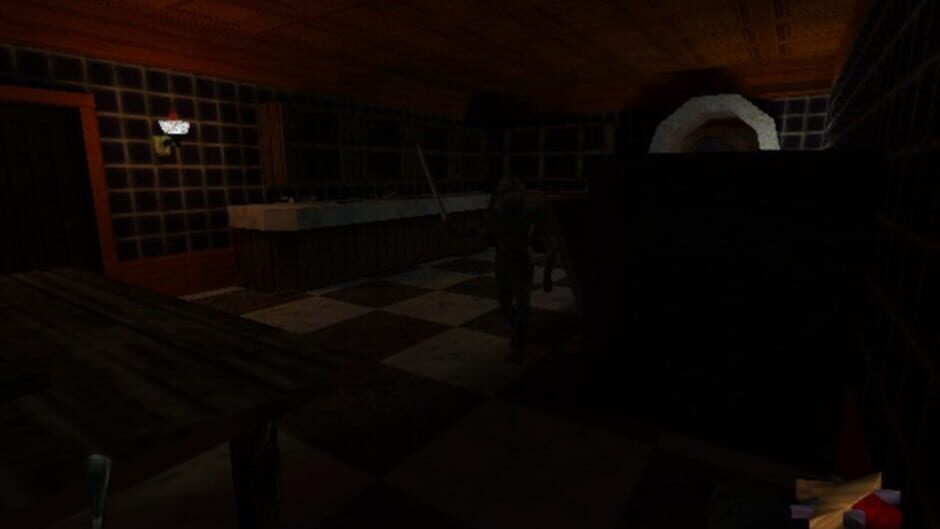 Eavesdropping and Kidnap have randomly
generated elements in them, which apart from adding replay value seem
to be about goading the player to be reactive and formulate plans
based on what is in front of them. In the former you have to creep up
to the right door and listen in for the location of a key – which
could be in any of 14 locations and is randomised each time you play.
In the latter, your target could be in a number of places, and the
player has to use information they find along the way to deduce where
they are and what signs to look out for. These dynamic designs keep
the player on their toes and encourage a responsive approach.
Eavesdropping and Kidnap have randomly
generated elements in them, which apart from adding replay value seem
to be about goading the player to be reactive and formulate plans
based on what is in front of them. In the former you have to creep up
to the right door and listen in for the location of a key – which
could be in any of 14 locations and is randomised each time you play.
In the latter, your target could be in a number of places, and the
player has to use information they find along the way to deduce where
they are and what signs to look out for. These dynamic designs keep
the player on their toes and encourage a responsive approach.
The penultimate levels have elicited
mixed reactions based on what I've read online on forums and comment
sections, and from comments on the Inside at Last podcast about the
first two Thief games.
'Casing the Joint' and 'Masks' take
place in the same sprawling mansion, which Garrett must enter firstly
to fill out his map and examine the security systems, then return to
on the night of an exhibition of priceless masks to steal at least
one of them. The criticism is that this is the same environment
twice. 'Casing the Joint' enforces ghosting – you now can't knock
anyone out, and must move through a large indoors space without
aggroing anyone. The idea of memorising an area so that you can get
back across it quickly and efficiently is accurate to what a thief
might do when casing a ritzy manor, and fits with what I like from
immersive sims which is the feeling of gaining mastery over a space.
For me, these levels deliver on the
promise of being a thief, with high levels of challenge and a dense
combination of everything the player has already done. It is all
leading into something that will notch the difficulty up for a new
challenge – for better and worse, but the significance of the
mission's placement is that it is honing abilities the player is
about to absolutely need in the final mission.
A difficult final mission
Sabotage at Soulforge is either pretty
high or pretty low on players' lists of their favourite missions in
this game, based on forum-diving, and I also found a lot of posts
purely expressing frustration with it. It is fair to say that it is a
divisive denouement to a brilliant game. I had been warned that it
was a significant hike in difficulty, but I still wasn't quite ready
for what I found.
The first half of the mission requires
you to gather materials and items to craft a beacon, which is
plot-necessary in order to thwart the primary antagonist's plans. To
understand where to get the components, how to combine them and
where, you need to pay close attention to a sort of manual Garrett
will find early on. Meanwhile, the areas you will be visiting are
patrolled by a denser than ever concentration of high level enemies
and security systems – no matter how much loot you scrounge up in
the mission prior, you simply won't be able to knock out every guard
and disable every robot.
The sticking point is that the main
concern requires you to keep track of materials, items and what are
basically crafting stations throughout a gigantic map, and it causes
so much inventory tax that for me it got past the point of working
with the map and compass – which is good and fun – and became
very fiddly.
However, the final section redeems the
mission – and the final taste that the game leaves you with. Once
Garrett has his beacon, he has to change the signal for a number of
broadcasting points. On the normal difficulty you have to hit five of
a possible eight. This is very successfully done, as each area has
its own self-contained stealth challenges that are all different and
all pretty tough. They use different mix-ups of enemies, set-ups and
geography that the player has dealt with before, but with everything
turned up a notch.
So the enforced ghosting, navigation of
tight spaces at speed and use of various tools throughout the levels
has all been leading to this, where every ability the player has
developed will be tested. Using your map and compass to get from one
place to another and find the beacon points is another essential
skill that you've been well prepared for at this point. While the
beginning of the mission is not really representative of what the
game has been asking you to do so far, the final section is a well
designed final exam – particularly as players on the normal
difficulty can choose another of the areas to deal with if one
doesn't suit the play style they have developed.
Conclusion
Overall I found
this game to be a 101 in using mechanics to teach a player to make
the most of their abilities to overcome greater and greater
challenges. It is nearly let down by a hurdle at the end, which I
initially didn't enjoy and which feedback online suggests has been
off-putting for others in the many years since the game came out.
Fortunately, the back half of the mission is so strong that –
personally – I remembered everything I loved about playing the game
and was able to use almost everything I had learned in getting to
that point.
While
the sound design, sensation of being in a real place due to the
amazing blueprinting of each level, the replay value due to the
porous environments and multiple paths, the way the narrative unlocks
through readables and environmental storytelling is all masterclass
level, the structure of the game and how it builds up the player's
relatonship with the mechanics is what stuck with me.

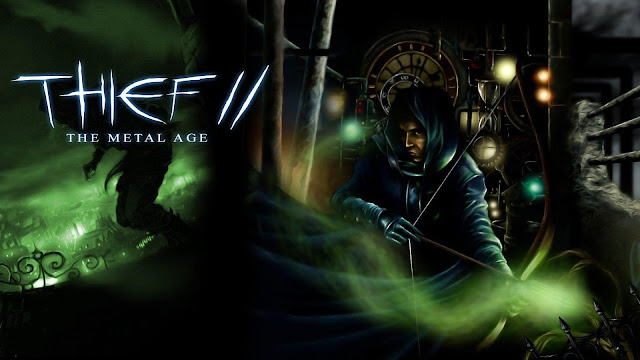
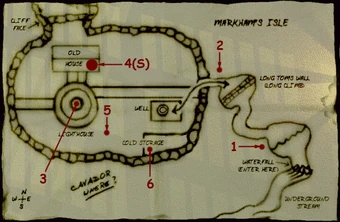
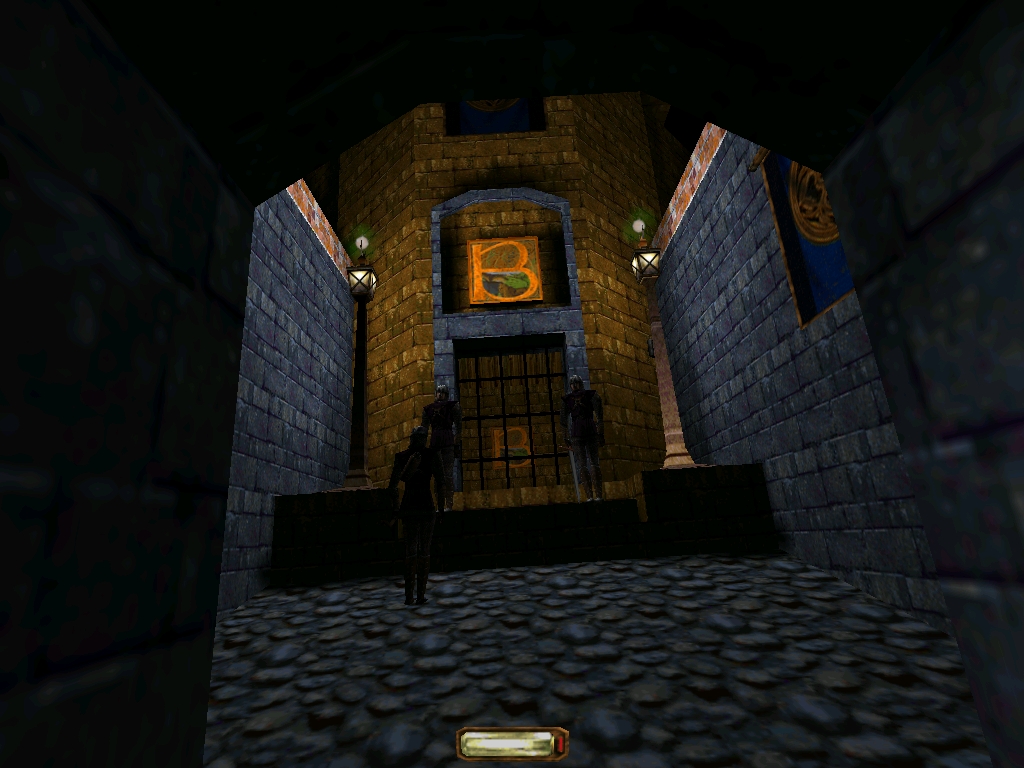
Comments
Post a Comment